BUILD ING









In 2021, I had the rare opportunity and time to hike 486 miles of the Colorado Trail. Starting just south of Denver, I wove through the mountains of the Front Range, across the Sawatch and the majestic Collegiate Peaks, rambling over the Cochetopa Hills into the glorious San Juan Mountains, and then descended into Durango.

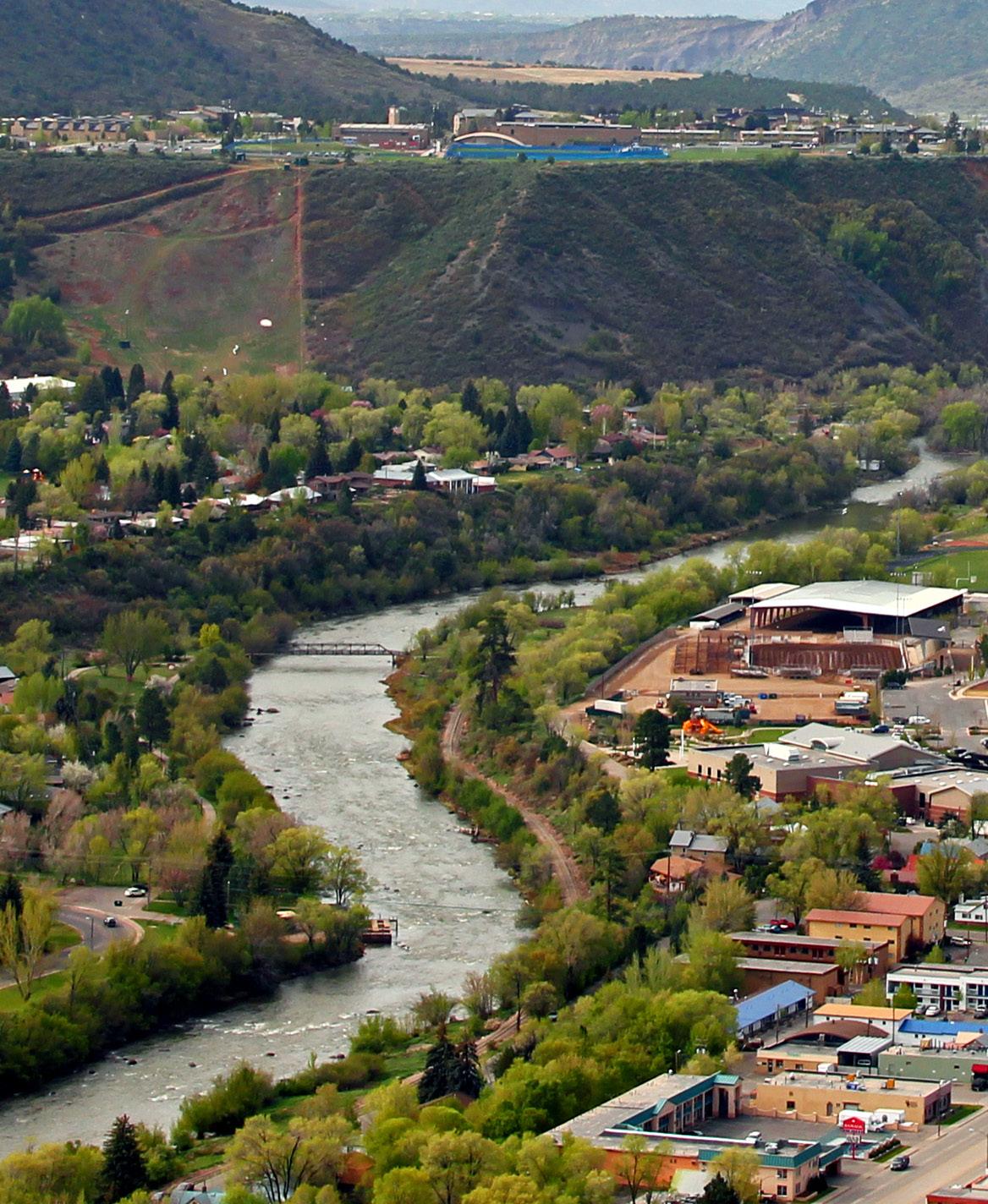
For 32 days I lived outside, slept on the ground, and put one foot in front of the other. I vividly remember my 25th day, in the Weminuche Wilderness, having already spent two days above timberline. On the last high ridge, a storm moved in, and I could see rain falling in the distance. The light was perfect, shining down on vertical walls carved out of lava that flowed some 20 million years ago. There are so many spectacular places of beauty and solitude in the West.
While extraordinary, the journey was, at times, also tedious and tough. Day after day, mile after mile, step after step, blister after blister, I and others I met along the trail carried on, even when it felt impossible. Progress is like that. Something worth achieving takes persistent action, often in the face of significant obstacles.
Our work at WRA requires the same persistence. Climate change affects everything we do. We all know the cycle. Each year increasing temperatures, drought, wildfires, air pollution, and extreme weather create devastating consequences for people around the world. The scale of the crisis can make it easy to lose hope and overlook our ability to effect change.
We’re far from comprehensively and permanently addressing the threat that a changing climate and biodiversity loss pose to our communities across the West. We still have a lot of hard work to do. But we do this work year after year, taking steps forward each time,

WRA has secured policies and commitments to reduce greenhouse gas emissions by 76 million tons annually.Day 1! Starting the Colorado Trail with my wife Denise. 468 miles to go. Durango, Colorado.
because we know that by leveraging state-level action, we can build a more sustainable future for generations to come.
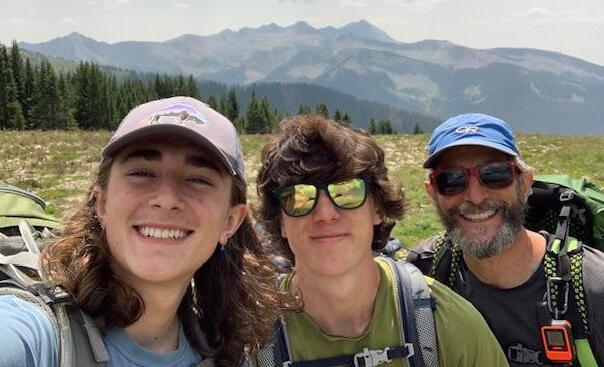

Robust public policies are the building blocks of change. They allow us to act today while also building a better future, spurring innovation, creating solutions, advancing equity, and making measurable change. I am incredibly proud to share our successes in this report — they demonstrate how our unique skill of driving state action is effectively creating the change we need at the scale and pace necessary to solve the climate crisis.
You’ll see how we use thorough research to develop sound policy and convince skeptical decision makers to act. We highlight how listening and engaging with partners leads to innovative programs for unique state problems. We share ways that advocacy with utilities can create outsized investments in electrification and rewrite the rules of energy planning. We’ll also show how careful implementation and measurement through rulemaking can change the outcomes for both public health and the economy for the better.
But none of this work and progress would be possible without caring supporters like you. Your generosity and willingness to meet the scale of the crisis we face with tangible action is a constant source of inspiration and motivation. Together we can go farther than we can as individuals to solve the West’s toughest challenges.

The next five years will determine our future, and we will leverage every tool we have to make them count. WRA is effectively addressing complex conservation issues and creating regional impact by using our unique strength in driving state action — developing science-based policies, informed by communities and stakeholders, and advocating for and implementing them to achieve measurable results.

We’re not giving up, and we’re not going to let our leaders give up, either. While the challenges ahead seem daunting, I know that through perseverance and hard work, we are driving policies that are the building blocks to a better West.
JON GOLDIN-DUBOIS | PRESIDENT
Our work addressing climate change requires the same persistence despite overwhelming odds.The final stretch. Two days to Durango with my son Jonah and his lifelong friend Louie.
How do we drive state action? WRA engages in four key aspects of policymaking that we have refined throughout our 34-year history.

WRA combines expertise and experience with research and science to develop policies, legislation, plans, regulations, and rules that address complex problems. Our regional approach integrates the distinct political and cultural landscape of states and allows us to scale proven strategies, models, and solutions across the West.

WRA works to ensure all voices are heard where decisions are made. We actively partner with communities, Indigenous governments, advocacy groups, and coalitions to develop effective and equitable policies, galvanize support, and unify communities around the most impactful state action.
WRA advocates for the adoption of critical solutions where decisions are made in state and local government — in legislatures, governors’ offices, commissions, and city councils. Leveraging our policy expertise with government affairs and communications, WRA works closely with decision makers to inform and enact ambitious policies. At the same time, we work to stop efforts that are environmentally harmful and impede progress.


Once a law, policy, plan, or rule is enacted, there is important and detailed work to ensure its effective implementation. WRA works with lawmakers, agencies, utilities, and stakeholders to put laws and policies into action. We defend them in legal forums, assess and analyze their impact, and ensure they deliver their intended outcomes.


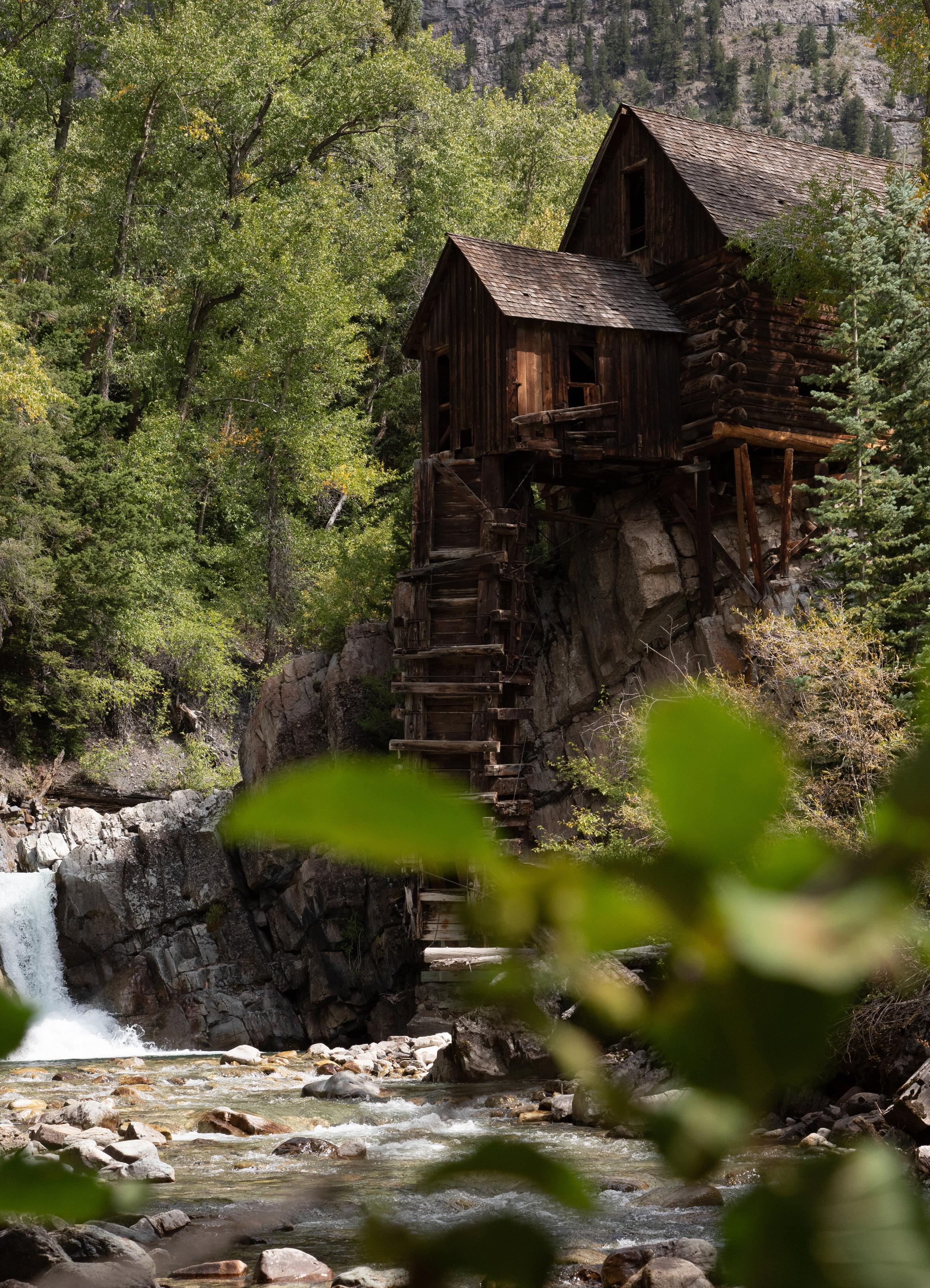 Photo of Crystal Mill near Carbondale by photographer Jake Wheeler of Colorado. @jakeewheeler
Photo of Crystal Mill near Carbondale by photographer Jake Wheeler of Colorado. @jakeewheeler



Whether you are rafting a roaring river, fly-fishing on a crystal-clear lake, or turning on the kitchen tap, water connects all of us in the West. Climate change, decades-long drought, and population growth strain our water supplies and threaten our very way of life.

“Water conversations that have been stalled out for months are already moving forward, and we’re starting to see the benefits of the networks and connections the workshop helped us build. It was an incredible opportunity, and I’m excited to keep the momentum going.”
The best way to keep water in rivers is to use less, yet there has been little connection between water and land-use planning in the West as our communities have grown. For years, water managers have struggled to find new sources of water to meet growing demands, often at a huge cost to people and the environment. The region’s arid landscapes have become overwhelmed by bright-green turf grass as precious drops of runoff are lost in storm drains. Through our research, WRA is creating a blueprint for sustainable water management, and more communities are fundamentally rethinking how they manage water.
Our efforts helped drive historic investments in water conservation in 2022. We received a grant to expand the Growing Water Smart program to Utah. Through a series of collaborative workshops and technical support, the program provides municipalities with the evidence-based building blocks they need to realize their water efficiency, smart growth, watershed health, and resiliency goals. The program incorporates WRA’s research and was first launched in Colorado by the Sonoran Institute and the Babbitt Center for Land and Water Policy. Colorado municipalities have been quick to apply what they learned — less than a year after attending the workshop, the city and county of Broomfield partnered with WRA and WaterNow Alliance to develop a new waterwise landscaping ordinance.
Other Western communities need these same policy frameworks, and fast. We partnered with the Utah Division of Water Resources, the Babbitt Center, and the Center for Water-Efficient Landscaping at Utah State University to bring the Growing Water Smart program to Utah. After years of building statewide support, generating local interest, and enduring setbacks from the pandemic, WRA launched the first workshops in Utah in the fall of 2022. Participating communities created comprehensive 12-month action plans that laid the foundation for integrating water and land-use planning. Plans include developing waterwise landscaping ordinances, incorporating water conservation and efficiency into general plans, and revising fees to incentivize water conservation. To date, one-third of Utahns live in a community that has participated in Growing Water Smart. Our goal is for every municipality and county to participate in Growing Water Smart and implement programs to sustainably manage water.
Meanwhile, WRA’s advocacy at the Utah State Capitol helped advance three forward-thinking water conservation bills in 2022. Senate Bill 110 requires local governments to consider water supplies and water efficiency measures when preparing long-term plans for future development, something that had been previously overlooked in Utah.


“The content was incredible, but getting key participants away from the day-to-day needs of their jobs and into an intensive workshop where facilitators help them create a framework for smart water use and growth — that was priceless. The work would just never get done without a venue like this.”
WRA also laid the foundation for legislation to conserve outdoor water consumption. In Utah, 70% of municipal water is used outdoors. The state has some of the highest per-person water use in the U.S., partly because of the prevalence of unmetered secondary water systems, which supply untreated irrigation water for outdoor use. Users pay a flat fee regardless of how much water they consume, and were not tracking their water usage. WRA conducted research to find a solution. We spoke with water managers and convened practitioners in secondary water metering, finance, and communication. We found that simply installing a meter to help people monitor their water use can reduce consumption by approximately one-third. WRA advocated for House Bill 242, which puts this research into practice. This law requires most water

 State capitol building in Salt Lake City, Utah.
State capitol building in Salt Lake City, Utah.
suppliers in Utah to meter these secondary water connections and provides grants to help fund these services.
WRA also helped advance two of the first statewide turf-replacement programs in our region. Colorado passed House Bill 1151, which created a two-year, $2 million fund to support local turf-replacement projects and directed the state to create a fund for Coloradans who do not have access to local programs. WRA was involved every step of the way — from conducting studies and piloting a municipal program with select communities to writing the bill language and finding legislators to sponsor it — and ensured it was signed into law. The legislation opened the door for communities to expand their turf replacement efforts. WRA built on this momentum by partnering with WaterNow Alliance to develop a guide to help communities finance large-scale turf replacement.
In Utah, House Bill 121 provided $5 million in incentives for people to replace their lawns with drought-tolerant landscaping. The program was so successful that the legislature has now committed another $3 million annually. This law also ensures that the state government walks the talk when it comes to water conservation by limiting how much turf grass may be on the grounds of new state facilities and setting goals
for state agencies to reduce their water use by 25% by 2026.


Colorado also became one of the first states to adopt rules for direct potable reuse. Direct potable reuse regulations allow wastewater to be purified and safely recycled for drinking water and other uses. By leveraging advanced water-purification technologies, we can relieve the pressure on local water supplies. Over the last seven years, WRA has been assembling the tools to implement this cutting-edge solution in Colorado. We secured more than $525,000 in funding, engaged a panel of experts to develop guidelines, and managed an inclusive stakeholder engagement process that developed the policies that were ultimately adopted in Colorado. The new rule was approved unanimously in 2022, opening the door to a new sustainable water supply.
For nearly a century, the West’s rivers and water supply have suffered under the weight of drought, climate change, and population growth, but the tide is turning. WRA’s expertise has shaped programs and legislation to increase water security, build resilience to the climate crisis, and protect rivers. Our work is far from complete, and we will be closely monitoring the implementation of programs and legislation passed in 2022 as we build on our progress in the years ahead.
Lisa Rutherford Recurring from“I have been a supporter of WRA for many years and plan to continue to do so because of their incredible impact. I was impressed with how WRA staff dug into the details of water use and availability in my county. Their analysis and expertise provided valuable strategies for a resilient water supply. Our future depends on their continued work.”
Donor
UtahFlaming Gorge Reservoir, Utah.
70% of Colorado’s water used for outdoor use.
of Utah’s water is used for outdoor water use.
50%

Adopting low-water-use lawns can reduce water consumption, which means more water in our rivers.

In 2022, WRA and partners at the U.S. Fish and Wildlife Service worked to make the timing of the Colorado River’s drought response releases benefit flows in the Green River, from Flaming Gorge Reservoir to hundreds of miles south through Utah, to support endangered fish species and recreational opportunities.





 Navajo girl poses with lamb.
Navajo girl poses with lamb.

Over the past two years, WRA developed policy opportunities resulting in $110 million in appropriations to conservation in Colorado and $95 million in New Mexico following on the heels of federal aid to states.
For many of us, our most treasured childhood memories are of romping in a neighborhood park or taking a hike in wide-open spaces. Every community in our region deserves a place where parents and their children picnic and play, and where people can seek solace and connection, or simply stare in wonder at the West’s unique flora, fauna, and spectacular landscapes. Yet, urban sprawl and destructive fires, exacerbated by climate change, have impacted our open spaces. And if we want to ensure these experiences and places are there for future generations, we must get to work now.
At WRA, we know that protecting biodiversity and preserving our natural resources are essential for the wellbeing of people and our planet, and we have been diligently working to build the framework for this vision.
By listening to the unique conservation challenges of our communities and the states we work in and collaborating with partners, we determined that the foundation for addressing habitat loss in the face of the climate crisis is long-term, sustainable conservation finance mechanisms.

Conservation financing is one of the most powerful tools we have to protect biodiversity. Advocating for legislation and ballot measures to generate public funds for conservation priorities can accelerate the preservation of vital habitats and ecosystems. Conservation finance has become a central part of our strategy, particularly following the passage of the Great American Outdoors Act, which offered increased funding for stateside programs, although often contingent upon generating up to 50% in a non-federal match.
Earlier examples of our work to secure funds for land conservation serve as a cornerstone for our current work and demonstrate our commitment to conservation finance as an effective tool for future conservation successes. In Montana, our policy advocacy resulted in a tripling of funding for the Habitat Montana program, successfully obtaining $10 million annually for conservation from marijuana tax revenues. In Arizona, we fought to restore funding for the state Heritage Fund in 2021, resulting in an allocation of $10 million from the state budget and the American Rescue Plan Act (ARPA) to protect and restore critical habitats.
Together, these examples laid the groundwork for significant progress in New Mexico, where we helped catalyze major victories through the implementation of ARPA funding.


New Mexico experienced an unprecedented and catastrophic wildfire season in 2022 that left a trail of devastation in its wake. The skies were choked with thick smoke, casting an eerie haze over once vibrant landscapes, as communities faced the terrifying reality of evacuations and the loss of their homes.
Because the wildfires predominantly affected underserved rural Hispanic areas, it was glaringly apparent that these communities had inequitable access to resources they needed to protect and restore their lands and homes. The magnitude of destruction served as a stark reminder of the urgent need to address our changing climate, safeguard forest and watershed health, and enhance wildfire prevention measures. These wildfires shined a bright light on the state’s need to invest in climate resilience.

In 2022, WRA helped to designate 25 streams in Colorado and 7 streams and rivers in New Mexico as Outstanding National Resource Waters — the highest tier of water quality protections available. These new designations translate to 618,800 acres of protected watersheds in Colorado and 865,000 acres in New Mexico.
As WRA expanded our team in New Mexico, we committed to engage in the critical effort to ensure the state could access federal conservation dollars. In the face of two of the largest recorded wildfires in New Mexico history, communities could no longer be left to the economic vagaries or the whims of political inaction.

In collaboration with 15 conservation organizations, we presented recommendations to legislative leadership to allocate federal stimulus dollars from ARPA to conservation initiatives. These recommendations highlighted the importance of immediate investments in on-the-ground recreation and restoration projects, promoting job creation, the outdoor economy, community health, and increased access to nature. Our efforts resulted in $43.5 million allocated for state parks,
river stewardship, outdoor recreation, and more, bolstering biodiversity conservation and water resource management.
The ARPA funding in New Mexico also led to investments in programs like the Trails+ Grant Program and the Outdoor Equity Fund. The Outdoor Equity Fund supported projects that increased access to outdoor recreation, enabling more than 12,000 kids to experience the outdoors through hiking, biking, camping, and hunting — empowering them to engage with nature and benefit from the associated positive physical and mental health effects. Additionally, significant funding through the Trails+ Grant Program expanded access to the outdoors and supported the growth of the outdoor industry in New Mexico. In all, the program provided funding for 15 projects
ARPA funding in New Mexico provided kids with increased access to experiencing and connecting with the outdoors.

across 11 counties. This included investments in trail maintenance, signage, and infrastructure, helping ensure that recreational areas remained safe and accessible for all.
WRA played a pivotal role in guiding state partners and shaping the narrative around the importance of these investments. By centering the mental health benefits and solace that outdoor activities provided during the pandemic, we emphasized the need to address the consequences of increased public land use, such as overcrowding, trash accumulation, and the importance of funding for resource management and maintenance. The influx of visitors during the pandemic exposed the underfunding of New Mexico’s state parks, making the ARPA funding a historic investment in ensuring recreation opportunities for New Mexicans statewide.
WRA’s work to secure ARPA funding set the stage for pursuing additional conservation funding in our states. The rapid utilization of these dollars by various programs and agencies shed light on the critical need and helped build a strong case for long-term, dedicated funding.

While we celebrate the victories of 2022, our work is not complete. New Mexico’s lack of a permanent source of conservation funding has left critical lands and waters unprotected. It has also resulted in missed opportunities to utilize available federal funds for habitat protection, wildlife conservation, recreation, and cultural site preservation. As we continue this momentum into 2023 and beyond, we will focus our attention on establishing permanent conservation funding in New Mexico, ensuring we can properly preserve our natural resources and build community resilience in the face of a warming climate.
Annual Donors from New Mexico
 Adobe-style building in Santa Fe, New Mexico.
Adobe-style building in Santa Fe, New Mexico.
“We feel lucky to be able support WRA’s environmental and climate work in New Mexico. The focus and depth WRA brings to strengthening the regulation of the state’s petroleum and utility industries is something we have come to count on.”
Jim Mackenzie and Mary Wommack
Cameron Miller is a part-time landscape photographer based at the foot of Colorado’s rugged San Juan Mountains. With his photography, he aims to present the scene just as he experienced it. He prefers spending his free time hiking, writing music, or playing his double bass. Pictured is a common collared lizard spotted on a hike. @cameronmillerphoto | cameronmillerphotography.com


Colorado’s capitol building incorporates the golden ratio, a mathematical element commonly found in nature in things like pinecones and wildflower petals.



Major changes to public policy can feel like they arrive overnight. A law is passed, and the landscape shifts. But in reality, the work done by WRA to advocate for and influence major changes on the state and local level is like the careful construction of an intricate structure, often taking years to develop, plan, and succeed. We play the long game, pushing through obstacles to achieve ambitious and meaningful policies. Building on a strong foundation is key, and WRA knows when to call out a policy framework that may be built to fail — and how to configure solutions that will weather shifting political winds and pressures from forces resistant to change.

In 2018, WRA launched one of the first initiatives to reduce carbon emissions on a regional scale. As part of this effort, The Climate Fix, we put concerted focus on the eight largest utilities within our region and worked with state legislatures and utility commissions to advance rules to reduce carbon emissions from the West’s power sector.
WRA has driven $304 million of utility investment in electrifying transportation in the past two years. Arizona-based Tucson Electric Power’s plan is the largest investment for transportation on a per-customer basis of any utility in our region.

Within WRA’s region, not every state has defined clean-energy plans. But increasingly, states within the region have come to see the importance of managing increasing energy demands, and they have updated plans to ensure that utilities are required spur rapid electrification of the transportation sector and to serve customers who drive electric vehicles. Arizona, however, lacked requirements for transportation electrification implementation plans, and WRA saw an opportunity.
In 2021, our team drafted comprehensive language to create a transportation electrification planning process in Arizona. Working closely with members of the Arizona Corporation Commission — the state’s utility regulatory authority — this language was ultimately adopted.

Following our initial work, in early 2022, we researched and analyzed examples of well-executed transportation electrification programs across the country. In April, WRA
released a resource paper, “Best Practices in Utility Transportation Electrification,” detailing how utilities across the country are developing programs to rapidly bring electric vehicle charging access to more diverse markets, ensure charging is done in a way that doesn’t overwhelm our power grids, and include equity at the heart of their programs.
WRA worked directly with management at Tucson Electric Power (TEP), which serves roughly 440,000 customers in the Tucson metropolitan area. Our resource paper became a blueprint for TEP, and after an extensive WRA-led stakeholder outreach process, the utility adopted many of the suggestions from our report.

WRA’s moment of victory arrived in November 2022, when the Commission voted to approve TEP’s transportation electrification implementation plan. The plan allocates more than $34 million for transportation electrification infrastructure efforts over the period 2023–2025.

This is the largest investment for transportation electrification on a per-customer basis for any utility in WRA’s region.
The Climate Fix relies on our expertise of driving state policy as a lever for transformational change. After significant work by WRA, Xcel Energy was the first in the region to set goals to reduce greenhouse gas emissions from its electricity system to be broadly in line with climate science — 80% by 2030 and 100% by 2050. The announcement by Xcel in 2018 was a watershed moment demonstrating that our model of developing policy solutions and working directly with utilities and decision makers could drive significant change. As the first major utility in the country to set goals consistent with the climate science, it was important for us to monitor Xcel Energy’s progress toward the goals.
In late 2021, Xcel Energy entered a settlement to resolve its pending clean energy plan and electric resource plan. WRA did not join due to concerns it extended operation of the Comanche 3 coal-fired plant until the end of 2034, provided insufficient certainty about near-term greenhouse gas reductions, and unreasonably favored fossil-gas acquisitions, allowing Xcel to acquire almost a billion dollars’ worth of new gas plants.
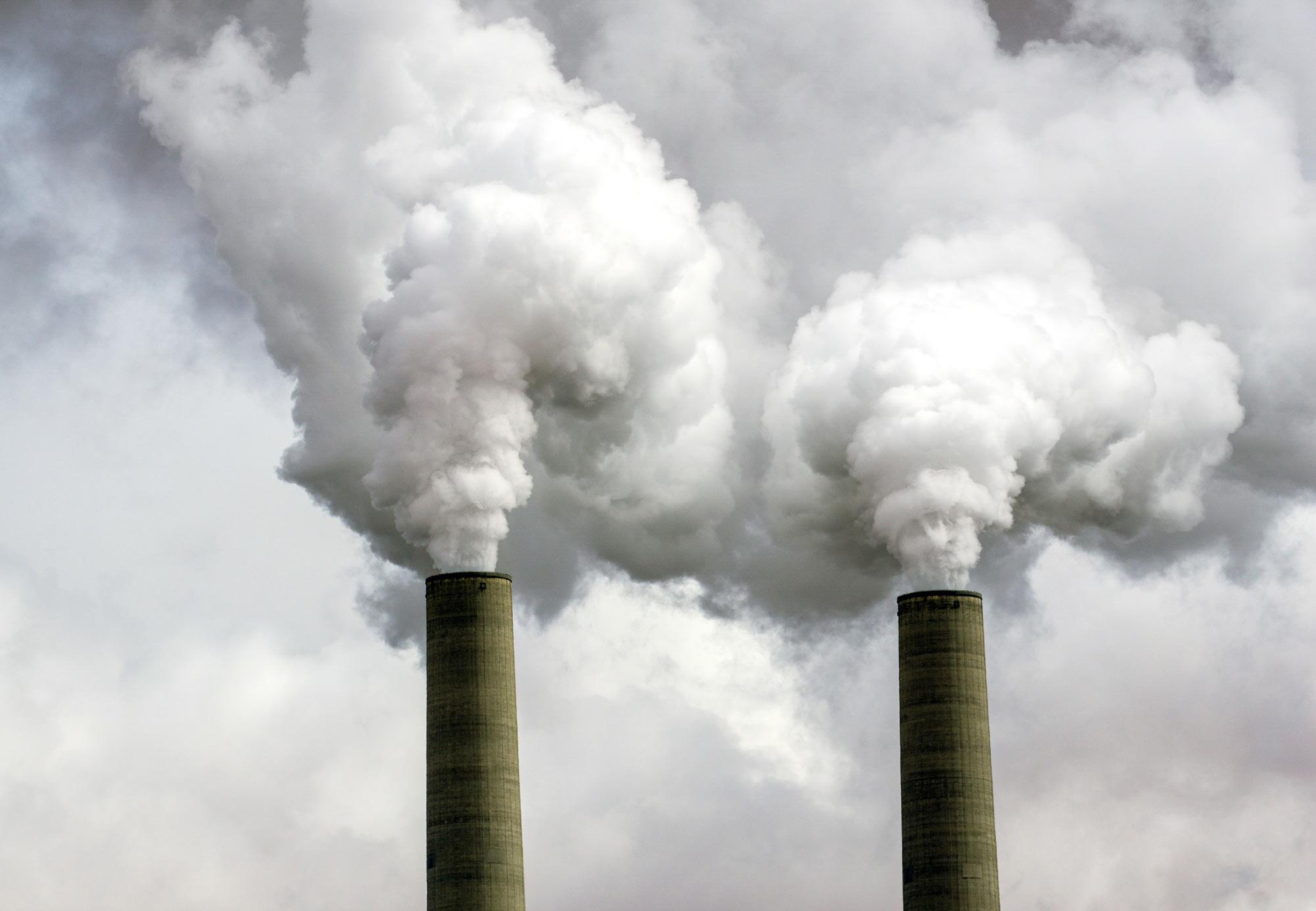
WRA supported parts of the agreement but opposed the overall framework. We actively engaged with Xcel and the Colorado Public Utilities Commission to evaluate retiring Comanche 3 earlier and sought limitations on the useful life of new gas plants. After WRA presented a compelling case, the commission indicated it was unwilling to approve the settlement as filed.
The parties went back to the drawing board and negotiated a new, updated settlement agreement that addressed many of WRA’s concerns. Xcel
agreed to retire the Comanche 3 coal unit by January 1, 2031, accelerating its retirement by four years and shortening its planned lifetime by 40 years. Thanks to WRA’s advocacy, the earlier coal plant retirement date, plus regulations reducing the assumed lifetime for any new fossil gas generation, and interim targets for reducing carbon emissions, Colorado will be on path to reach its climate goals. Important provisions also extended community assistance to the Pueblo community for 10 years and additional assistance in the transition to new economic opportunities as the coal-fired Comanche unit closes.




Through our advocacy and influence, WRA helped retire the Comanche 3 coal plant earlier than planned and secured millions of tons of annual emissions reductions by holding electric utilities accountable to Colorado’s emissions reductions goals. Our successful advocacy substantially influenced Tuscon Electric’s Transportation Electrification Plan and the decision to retire Xcel Energy’s Comanche Generating Unit several years early. These case studies demonstrate how WRA, builds relationships and leverages its expertise to get results.

WRA plays the long game, pushing through obstacles to achieve ambitious and meaningful policies.




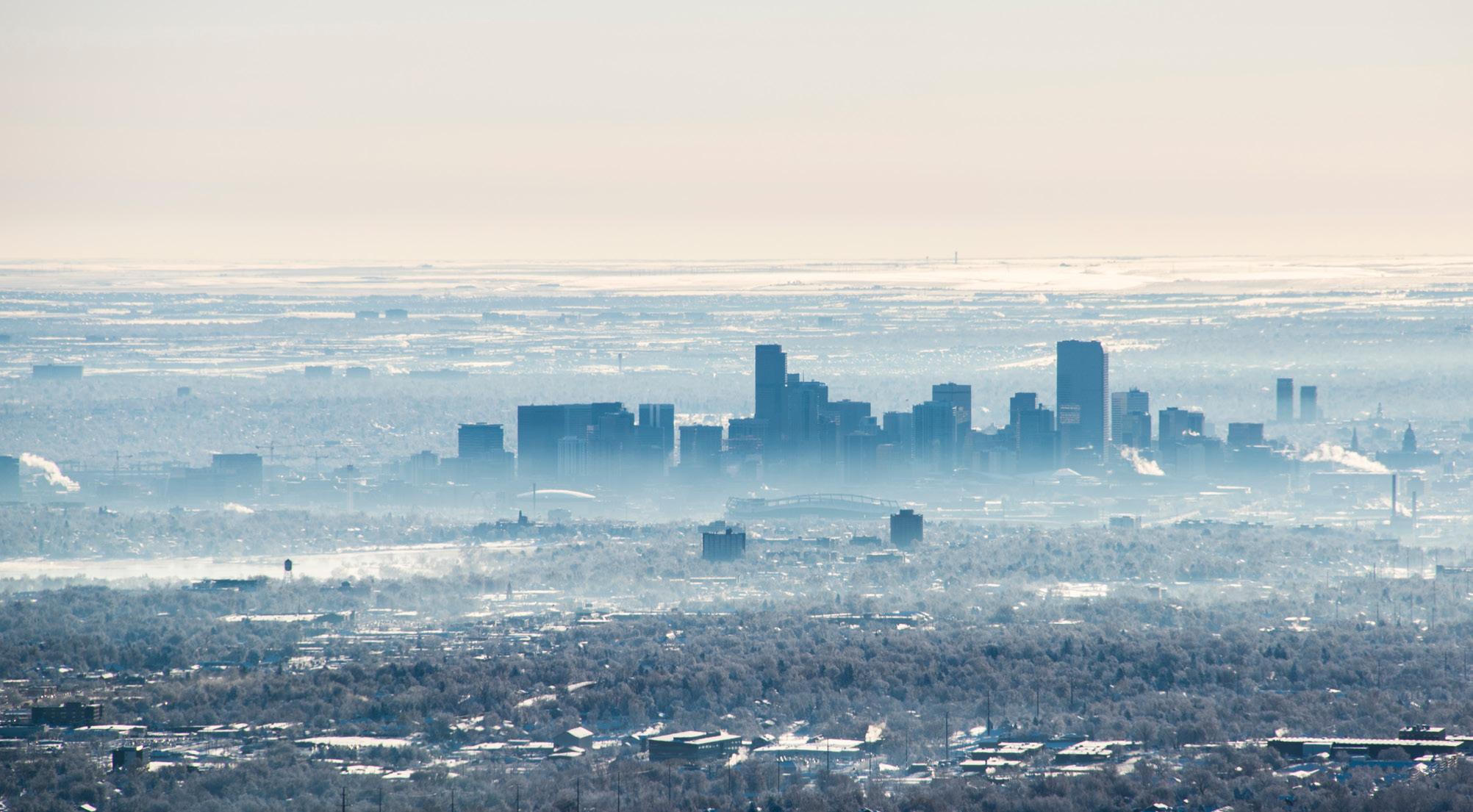
“WRA is dollar-for-dollar one of the most impactful organizations in the country. Their strategic approach, talented team, and key relationships have enabled them to pass legislation and implement policies that will significantly reduce carbon emissions over the next two decades.” Michael
Thomas,Donor from Colorado
Few things are more central to our lives than our homes or the air we breathe. Heating and cooling are vital for our health and wellbeing, especially as climate change drives more extreme summer heat waves and poor air quality. Electrifying homes and businesses is critical for cost-effectively addressing climate change, and also protects customers from rising or volatile gas prices.
While there was cause for celebration after the 2021 passage of a WRA-instigated bill to advance clean heat that successfully navigated drafting, committee hearings, budget negotiations, amendments, and floor votes to the governor’s desk, the work is far from over. We are left with important and detailed work to ensure effective implementation that will determine the success of our efforts to advance cleaner heating and cooling in our homes and offices.
Our implementation and measurement stage requires a watchful eye, reference to the original blueprint, and careful inspection of the structures built from the policies we have passed. WRA works with lawmakers, agencies, utilities, and stakeholders to put policies into action, defend them in legal forums, assess and analyze their impact, and ensure they deliver their intended outcomes equitably.

The building and industrial sectors are key to addressing climate change. In 2021, Colorado’s
Greenhouse Gas Pollution Reduction Roadmap identified combustion of fossil fuels in buildings as one of the four largest sources of
greenhouse gas pollution in Colorado. Studies also show that two out of three buildings in the Interior West use fossil gas for cooking, heating water or spaces, or some combination of heating needs.


WRA envisions a future where electrifying our homes and buildings will lower energy costs, allow for more efficient use of the electric grid, improve indoor air quality, and reduce emissions, and we began laying the foundation for our vision.
WRA successfully advocated for and influenced the passage of Senate Bill 21-264 in 2021, a nationally groundbreaking law to clean up Colorado’s indoor air quality and reduce greenhouse gas pollution from buildings. This legislation requires gas utilities to implement clean heat plans to reduce emissions by 22% by 2030. It allows utilities to use multiple technologies to reach these goals, like energy efficiency and electrification, and requires them to file clean heat plans with the public utilities

commission. The public utilities commission will ensure these plans don’t burden consumers or disproportionately impacted communities.
Following the landmark passage of the Clean Heat Standard Act, successful implementation can mean the difference between creating a national model or a slowdown in progress on clean energy. This decade is critical for scaling up the transition to a zero-carbon economy by midcentury to begin to see the impacts of emissions reductions over time, and the building-sector transformation must start now. By shaping the rules and standards for this legislation, we’re setting up what the future of beneficial electrification can look like in the West.


Many things contribute to building electrification. While not an exhaustive list, things like energy efficiency and electric appliances can reduce pollution in your home and emissions at large.
Beneficial electrification is a term for replacing direct fossil fuel use (e.g., propane, gas, heating oil) with electricity in a way that reduces overall emissions and energy costs.

WRA has emerged as a leader in shaping and crafting the policies and establishing the principles for transitioning our homes and buildings to being more efficient, affordable, and healthy. Implementing the clean heat standard has required developing a set of evaluation tools and rules, starting from scratch, with the Colorado Public Utilities Commission (PUC) and the Air Pollution Control Division at the Colorado Department of Public Health and Environment. We actively participated in a rulemaking process with the Commission, provided recommendations for the requirements of utilities, and joined working groups to develop protocols for verifying and accounting for emissions reductions. When Xcel Energy filed their inaugural distribution system plan, a related proceeding to ensure the electrical grid is prepared to handle new demands for electric vehicles and buildings, WRA provided testimony for modifications and additions to strengthen the plan and to account for equity
concerns, including upfront and shared costs of residential solar.
In addition to informing the rules and standards for utility clean heat plans, WRA has served as a watchdog to ensure the process is kept on track and that conflicting interests do not delay the advancement of beneficial electrification. When Black Hills Energy proposed a renewable energy gas program that would have no emissions-reduction benefits, WRA and partners strongly opposed it, and Black Hills withdrew their application.
When Xcel Energy’s gas rate case proposed increased spending on the gas system, with increased rates and new capital investments, WRA pushed back. Xcel Energy wanted to spend over $500 million annually on capital investments in its gas delivery system in 2023 and 2024. Such investments would have extended the utility’s reliance on fossil fuels and saddled ratepayers
“I first came across WRA while researching the Colorado Clean Air-Clean Jobs Act, which would phase out some of the oldest coal-fired power plants in the state and replace them with a diverse portfolio of clean energy. WRA was an impressive advocate for the policy, and it stands as a huge success story today. Thanks to WRA, the state is now on a trajectory to achieve 50% renewable energy by 2026, reflecting a 60% reduction in carbon emissions.”




with the cost of gas infrastructure long after its planned phaseout. WRA filed detailed testimony explaining the electrification alternatives available now and recommended the Colorado PUC not approve future gas investments without close scrutiny in the upcoming 2023 clean heat plan. We know that we need to phase out gas infrastructure and construction hookups to reach our goals, not increase them.
WRA continues to explore all the building blocks it will take to decarbonize our homes and buildings, addressing potential barriers along the way. Our work in researching and developing clean heat legislation, building a strong coalition to advance the bill, successfully advocating for its passage, and continuing engagement in establishing the rules of the proceeding comes to a culmination in 2023, when Colorado utilities must file their first compliant clean heat plans. WRA will continue to advocate for strong plans that meet the emissions reduction goals, ensure equity, and protect Colorado consumers.
Meeting our clean heat goals means eliminating subsidies for gas appliances, removing fees for customers to leave the gas system, phasing out gas infrastructure, dramatically expanding the deployment of heat pumps, making them the preferred choice to gas heating and cooling systems, and building an extensive, trained workforce ready to meet the demand for installation. Our communities can have healthy, thriving spaces with clean air, both inside and outside, and the equitable financial assistance to make it a reality. By building the future of clean heat, WRA is intervening to make sure that we’re driving the gas transition as efficiently, affordably, effectively, and equitably as we can.
 Gandske, DG+Design Donor from California
With clean heat, our communities can have healthy spaces with clean air, both inside and outside of our homes.
Crested Butte, Colorado.
Gandske, DG+Design Donor from California
With clean heat, our communities can have healthy spaces with clean air, both inside and outside of our homes.
Crested Butte, Colorado.


WRA’s Board of Directors is one of our chief assets, providing exemplary leadership that has helped make it possible for us to protect the West’s land, air, and water.


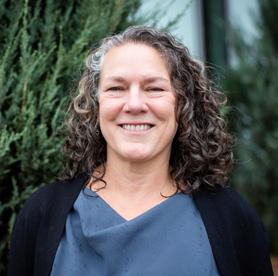

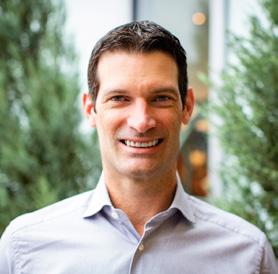
Colorado


Kim Miller
Boulder, Colorado
Reuben Munger



Dedham, Massachusetts
Loretta Pineda



Denver, Colorado
Portia Prescott

Cherry Hill, New Jersey
Christopher Robinson



Park City, Utah
Yadira Sanchez
Redmond, Washington
Jamie Starr
Park City, Utah
Irvine, California
Felipe Vieyra

Aurora, Colorado

Based in Phoenix, Arizona, Jordan Griffith is an outdoor photographer aspiring to connect others with the wild and beautiful world around them in the Southwest. This photo of ferns and Aspen trees was captured in Flagstaff. @jordanexplores

WRA’s Senior Leadership uses their experience and extensive skill set to support staff, embody our brand, and further our mission of conservation. Learn more about our dedicated team of experts at WesternResourceAdvocates.org/staff.
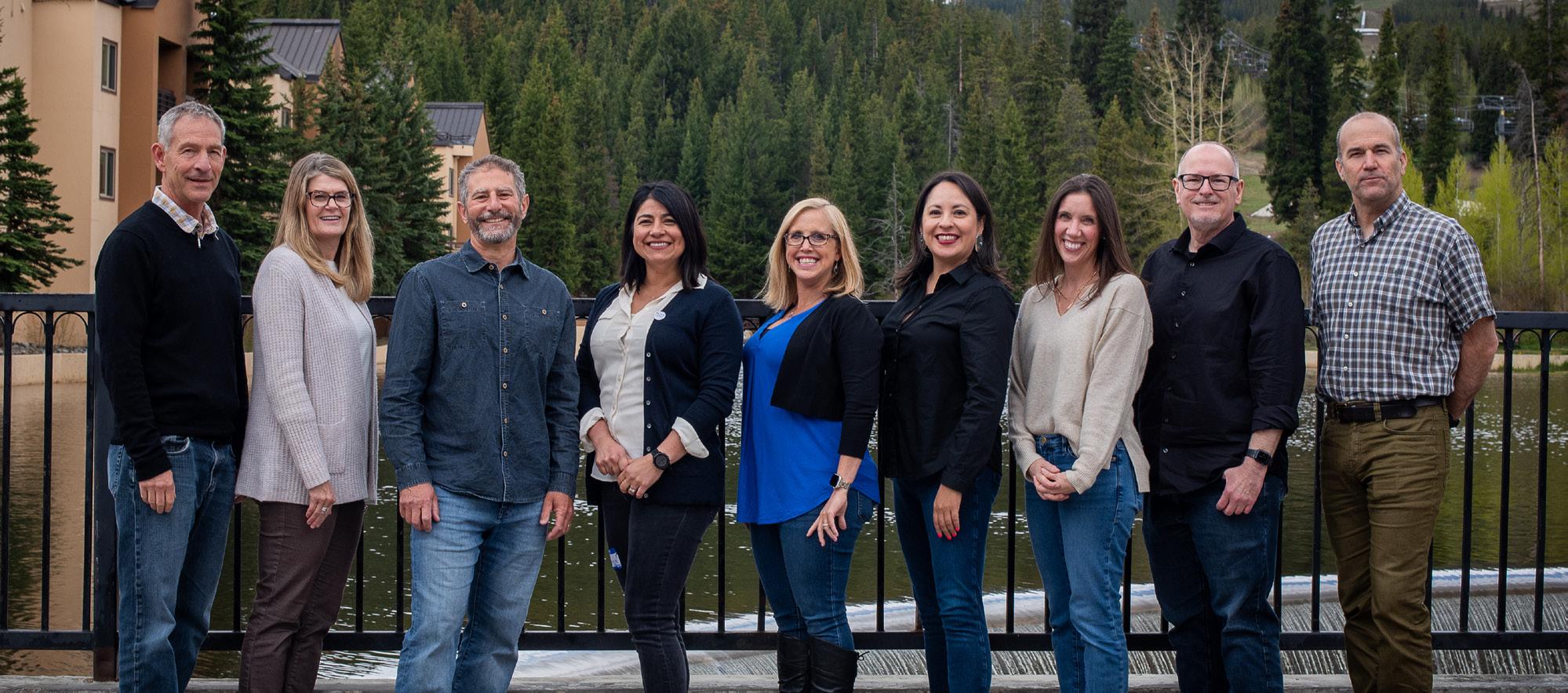
Become an advocate for the West and sign up for WRA’s email list to stay informed.
Turn your love for the West into meaningful change by supporting WRA today.
 Attendees at the WRA staff retreat in Breckenridge, Colorado. Captured by Allyson Smith of Denver. @good.life_photography
Attendees at the WRA staff retreat in Breckenridge, Colorado. Captured by Allyson Smith of Denver. @good.life_photography
PRESIDENT
Jon Goldin-Dubois

VP OF DEVELOPMENT & COMMUNICATIONS
Theresa Bushman
VP OF EQUITY & CULTURE
Kathryne Grove


VP OF POLICY & PROGRAMS
John Nielsen
GOVERNMENT AFFAIRS DIRECTOR
Maria Nájera
VP OF FINANCE & ADMINISTRATION
Rick Trilsch

MARKETING & COMMUNICATIONS DIRECTOR
Christie Silverstein, APR
HEALTHY RIVERS DIRECTOR






Bart Miller
WESTERN LANDS DIRECTOR
Jeremy Vesbach

ARIZONA 1429 North 1st Street • Suite 100 Phoenix • Arizona 85004 480.667.5625
COLORADO | BOULDER 2260 Baseline Road • Suite 200 Boulder • Colorado 80302 303.444.1188
COLORADO | DENVER 1536 Wynkoop Street • Suite 500 Denver • Colorado 80202 303.444.1188
Western Resource Advocates is a nonprofit, tax-exempt charitable organization (tax identification number 84-1113831) under Section 501(c)(3) of the Internal Revenue Code. Donations are tax-deductible as allowed by law.
For more information about WRA or becoming a donor, please contact Annual Fund Specialist Erika Stadsklev at erika.stadsklev@westernresources.org or 720.763.3734.
WesternResourceAdvocates.org

